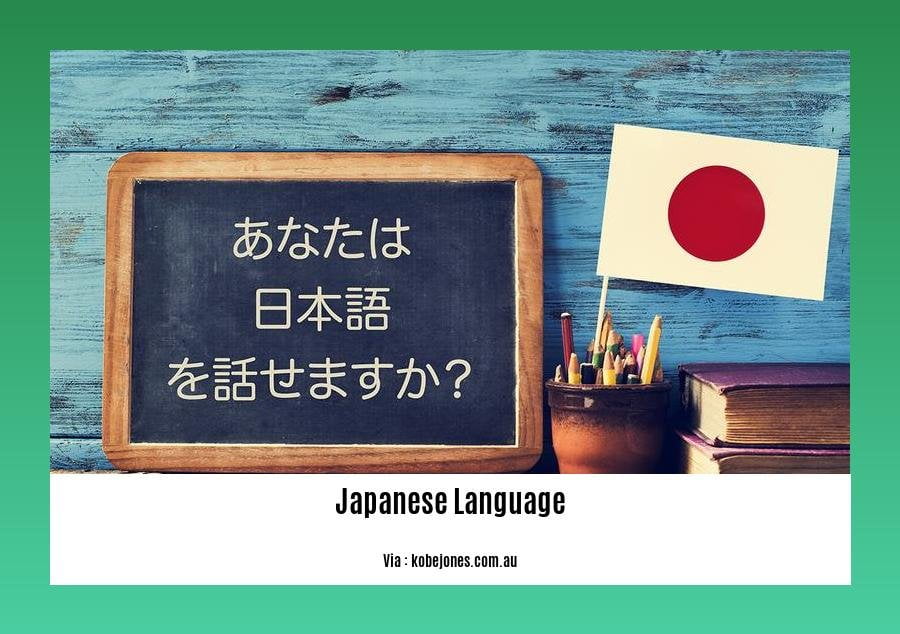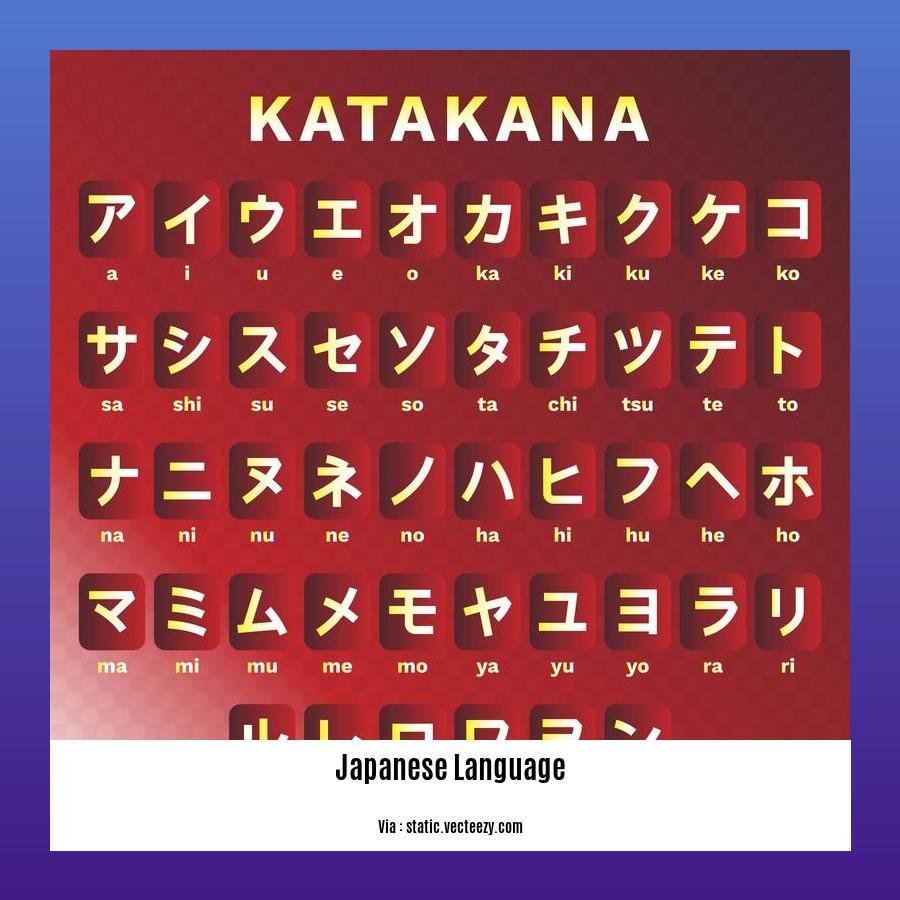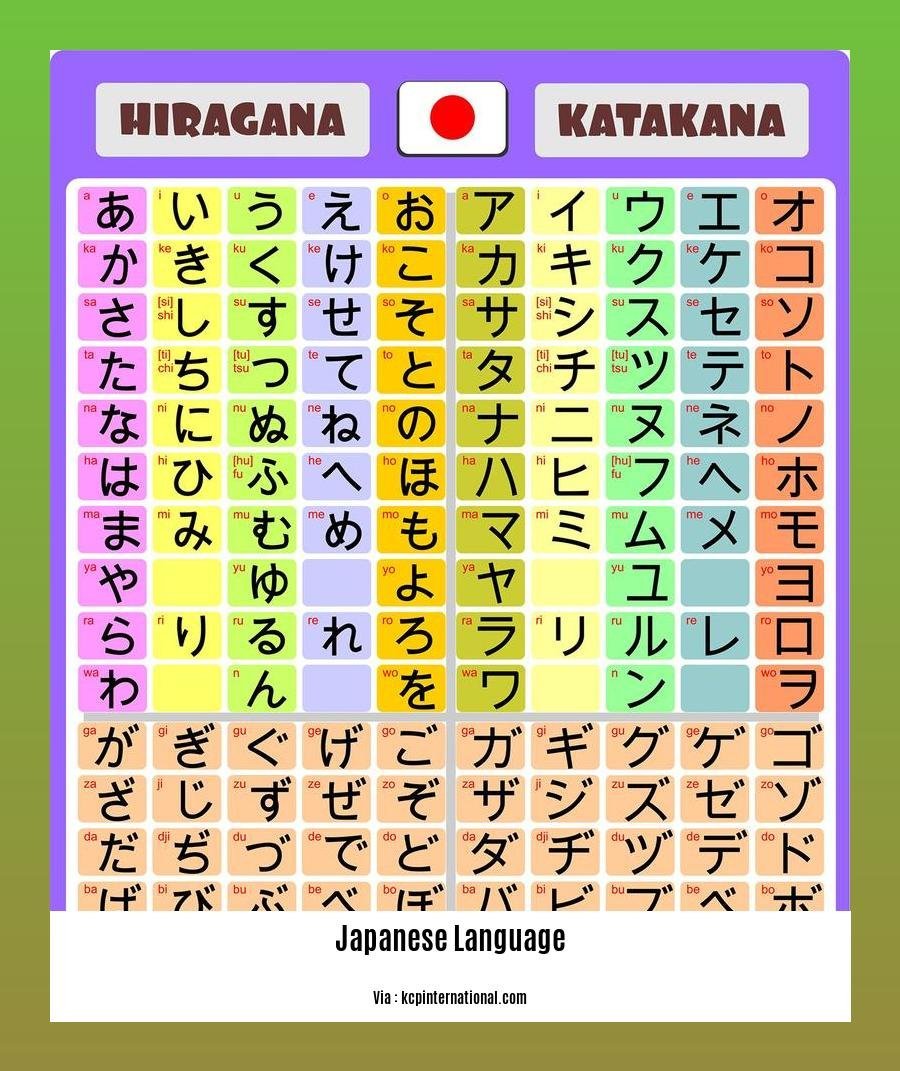Explore the enigmatic world of the Japanese language in “Unraveling the Wonders of the Japanese Language: Discover its Captivating Facets.” Immerse yourself in its alluring writing system, delve into its rich history, and unravel the complexities of its grammar. Get ready to uncover the captivating facets that make Japanese a truly unique and fascinating language.
Key Takeaways:
Japanese is one of the world’s fastest languages when spoken.
Multiple ways to say “I” in Japanese.
There are multiple characters for the same sound, and characters can have multiple readings.
Japanese verbs do not have conjugations.
Christianity introduced Romaji in the 16th century.
Interesting Facts about Japanese Language

The Japanese language, with its rich history and unique characteristics, offers endless fascination for linguists and learners alike. Delving into its intricacies reveals a tapestry of interesting facts about Japanese language that can both surprise and captivate. Let’s uncover some of these captivating aspects:
Japanese – A Speedy Language
- Japanese is renowned for its rapid speech, making it one of the world’s fastest languages. Its syllables are pronounced distinctly and crisply, resulting in a fast-paced flow of words.
Multiple Ways to Say “I”
- Unlike English, Japanese boasts a variety of words to express “I,” depending on the context and formality of the situation. Some common forms include “watashi,” “boku,” “ore,” and “atashi.”
Verbs Without Conjugations
- Japanese verbs stand out for their lack of conjugation. They remain unchanged regardless of tense, number, or person, simplifying verb usage compared to many other languages.
Romaji’s Christian Roots
- The roots of Romaji, the romanized form of Japanese, can be traced back to Christian missionaries who introduced the Latin alphabet to Japan in the 16th century.
Homonyms and Polyphony
- The Japanese language features homonyms, words with the same pronunciation but different meanings. Additionally, a single character can have multiple pronunciations, and conversely, a single pronunciation can be represented by multiple characters.
A Written Language Steeped in History
- Japanese writing comprises three distinct systems: hiragana, katakana, and kanji. Hiragana and katakana are phonetic scripts, while kanji are ideograms adopted from Chinese characters.
Nuances of Politeness
- Japanese culture places great emphasis on politeness, and this is reflected in the language. Honorifics and humble expressions are commonly used to show respect and humility.
Beyond Words
- Communication in Japanese often extends beyond spoken words. Nonverbal cues, such as body language, facial expressions, and intonation, play a crucial role in conveying messages.
Dialectal Diversity
- Japan is home to a diverse range of dialects, each with unique accents, vocabulary, and grammatical features. The Kansai dialect, spoken in the western part of the country, is particularly well-known.
Learning Japanese – A Rewarding Journey
- Learning Japanese can be a challenging but rewarding endeavor. With persistence and dedication, learners can unlock the complexities of this fascinating language and gain a deeper appreciation for Japanese culture.
Brimming with time-honored traditions and cultural grandeur, our comprehensive guide on quinceanera facts unveils the captivating history and significance of this milestone celebration across different cultures. Take a trip down memory lane and discover the fascinating stories behind this cherished event! facts about quinceanera
Ready to unravel the mysteries of the vast Russian language? Discover its unique characteristics, the intriguing history of its evolution, and its impact on global communication. Immerse yourself in the beauty of Cyrillic characters and explore the nuances of grammar that make Russian a captivating language. facts about Russian language
Intricate grammatical structures with particles indicating grammatical functions
In the tapestry of human language, Japanese stands out with its unique and intricate grammatical structures. One striking feature of Japanese grammar is the use of particles, small words that add nuance and specificity to sentences by indicating grammatical functions. These particles, like tiny linguistic puzzle pieces, fit together to create a rich and complex system of communication. They can mark subjects, topics, objects, or sentence endings, and can also indicate questions, exclamations, or conditionals.
For example, the particle “wa” marks the subject of a sentence, as in “Watashi wa gakusei desu” (I am a student). The particle “ga” marks the topic, as in “Gakusei ga hon wo yonde imasu” (The student is reading a book). And the particle “o” marks the object, as in “Sensei ga hon o watashi ni kuremashita” (The teacher gave me a book).
Japanese also uses particles to indicate questions, such as “ka,” which is added to the end of a sentence to create a yes/no question, as in “Anata wa gakusei desu ka?” (Are you a student?). Exclamations are marked with the particle “yo,” as in “Suteki na hon desu yo!” (What a wonderful book!). And conditionals are marked with the particle “ba,” as in “Anata ga gakusei nara, watashi wa sensei desu” (If you are a student, then I am a teacher).
The use of particles in Japanese grammar is not only complex but also highly contextual. Different particles can be used to express the same grammatical function, depending on the situation or the speaker’s intent. This can be a challenge for learners of Japanese, but it also adds to the language’s richness and expressiveness.
Key Takeaways:
- Grammatical particles in Japanese are small words that indicate grammatical functions such as subjects, topics, objects, questions, and conditionals.
- Japanese has a diverse array of particles that can be used in different contexts and situations.
- The use of particles adds nuance and specificity to Japanese sentences, making the language rich and expressive.
- Studying Japanese particles is essential for understanding the language’s intricate grammatical structures and communicating effectively in Japanese.
Relevant Sources:
- Japanese Grammar: A Complete Guide to Learning the Basics of Japanese Grammar
- All About Japanese Particles: A Guide to Using Particles Correctly
Complex System of Honorifics to Express Social Hierarchy and Politeness

The Japanese language, renowned for its intricate writing system and rich history, possesses a distinct feature that has captivated linguists and anthropologists alike: the complex system of honorifics. Embedded within the very fabric of the language, these honorifics serve a profound purpose in expressing social hierarchy and politeness, reflecting the deep-seated cultural values of respect and consideration.
Imagine yourself stepping into a traditional Japanese tea ceremony, where every gesture, every word uttered, carries a profound significance. The choice of words, the subtle nuances in tone and pitch, all reflect the delicate balance of social hierarchy and the utmost respect accorded to each participant. This is where the intricate system of honorifics comes into play.
Japanese honorifics encompass a vast array of linguistic forms, each carefully crafted to convey different levels of respect and politeness. From敬語(keigo), the formal and respectful language, to謙譲語(kenjogo), the humble language that downplays the speaker’s status, and丁寧語(teineigo), the polite language used in everyday interactions, honorifics permeate every aspect of Japanese communication.
Consider the following scenario: you encounter a stranger on the street and ask for directions. In English, you might simply say, “Excuse me, can you tell me how to get to the train station?” In Japanese, however, the choice of words and honorifics you employ will depend on several factors: the age, gender, and social status of the person you are addressing, as well as the context of the situation.
To a stranger of similar age and status, you might say, “Sumimasen, eki made no michi o oshiete kudasai.” This phrase incorporates the polite form of the verb “to teach” (oshiete kudasai) and the honorific suffix “-san,” which indicates respect for the person you are addressing.
If the stranger appears to be older or of higher status, you would use more formal and respectful language, such as “Sumimasen, eki made no michi o oshiえていただけませんか?” Here, the verb “to teach” is conjugated in the humble form (oshiete itadakemasen ka), which conveys your humility and deference to the person you are asking for assistance.
The system of honorifics in Japanese is not merely a set of linguistic rules; it is a reflection of the cultural values that shape Japanese society. The emphasis on respect, hierarchy, and politeness is deeply ingrained in the Japanese psyche, and honorifics serve as a means to express these values in everyday communication.
Key Takeaways:
- The Japanese language features a complex system of honorifics used to express social hierarchy and politeness.
- Honorifics vary depending on the age, gender, and social status of the speaker and the person being addressed, as well as the context of the situation.
- Japanese honorifics include respectful language (敬語), humble language (謙譲語), and polite language (丁寧語).
- Honorifics are not merely linguistic forms but cultural expressions that reflect Japanese values of respect, hierarchy, and politeness.
Relevant Sources
- Honorifics: Types, Data, and Importance for Linguistic Theory
- The Honorifics and Politeness Levels of Javanese, Chinese, and Japanese
Expressive nature with a wide range of onomatopoeia and mimetic words
Delving into the world of the Japanese language, I am astounded by its ability to paint vivid pictures and evoke emotions through its expressive nature, highlighted by a wide range of onomatopoeia and mimetic words. These linguistic gems bring a unique dimension to Japanese, allowing it to convey nuances that are hard to express in other languages.
Onomatopoeia, words that imitate sounds, are a hallmark of the Japanese language. From the chirping of birds (ぴよぴよ, piyo piyo) to the rustling of leaves (さらさら, sara sara), Japanese is replete with onomatopoeias that mimic the sounds of the natural world. These words add a sense of immediacy and realism to descriptions, bringing the reader closer to the action.
Mimetic words, which describe actions or states through their associated sounds or sensations, are another fascinating aspect of Japanese. Whether it’s the sound of footsteps (どしどし, doshi doshi) or the feeling of a soft breeze (ひゅー, hyuu), mimetic words provide a multisensory experience, allowing readers to feel and hear the actions they’re reading about.
The prevalence of onomatopoeia and mimetic words in Japanese adds a layer of depth and richness to the language. They capture the essence of experiences, making them seem more tangible and immersive. Moreover, these words can convey emotions and atmospheres, enhancing the storytelling and descriptive power of the Japanese language.
For instance, the word “ざわざわ” (zawazawa) captures the subtle but palpable sense of unease or restlessness, while “わくわく” (wakuwaku) expresses the feeling of excitement or anticipation. These words, difficult to translate directly into English, add a depth of nuance to Japanese that makes it a truly expressive language.
Key Takeaways:
- Japanese onomatopoeia captures the sounds of the natural world, adding realism and immediacy to descriptions.
- Mimetic words in Japanese describe actions and states through sounds or sensations, creating a multisensory experience for readers.
- The abundance of onomatopoeia and mimetic words in Japanese enriches the language, providing depth, nuance, and a strong sense of atmosphere.
- These words are essential to understanding the expressive power of the Japanese language.
Relevant Sources:
- Onomatopoeia and Mimetic Words in Japanese
- The Magic of Japanese Onomatopoeia
FAQ
Q1: Is it true that Japanese is the fastest spoken language in the world?
A1: While it is often mentioned as a fun fact, there is no scientific consensus to support the claim that Japanese is the fastest spoken language globally. Speech rate can vary based on factors like context, speaker, and region.
Q2: Can you explain the multiple ways to say “I” in Japanese?
A2: Japanese has an intricate system of personal pronouns, including watashi, boku, ore, and atashi, each conveying different nuances of formality, gender, and social context.
Q3: Why don’t Japanese verbs have conjugations?
A3: Unlike many other languages, Japanese verbs do not change their form to indicate tense, person, or number. Instead, auxiliary words are used to express these grammatical concepts.
Q4: What are Romaji, and how did they originate?
A4: Romaji refers to the Romanized representation of Japanese words using the Latin alphabet. It was initially developed by Christian missionaries in the 16th century to aid in the spread of Christianity in Japan.
Q5: Can you elaborate on the concept of grammatical particles in Japanese?
A5: Grammatical particles are essential elements of Japanese grammar, adding nuance and indicating sentence structure and relationships between words. They mark subjects, objects, particles, and various grammatical functions.
- Crypto Quotes’ Red Flags: Avoid Costly Mistakes - June 30, 2025
- Unlock Inspirational Crypto Quotes: Future Predictions - June 30, 2025
- Famous Bitcoin Quotes: A Deep Dive into Crypto’s History - June 30, 2025
















